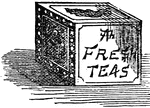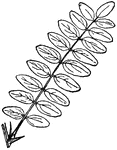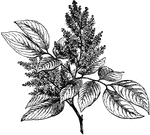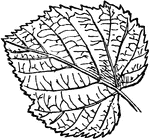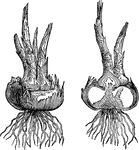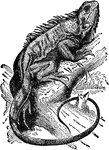
Iguana
"Iguana is a genus of saurian reptiles, natives of Brazil, Cayenne, the Bahamas, and neighboring localities…

Jacana
"The Jacana is a wading bird; a genus of grallatores. They are very light birds; and the wide surface…

Marsh Mallow
"The Marsh Mallow is a softly pubescent plant, with axillary cymes of large rosy leaves. a,…

Myrtle
"Myrtle is a genus of plants, natural order Myrtaceæ, consisting of aromatic trees or shrubs,…

Myrtle Flower
"Myrtle is a genus of plants, natural order Myrtaceæ, consisting of aromatic trees or shrubs,…
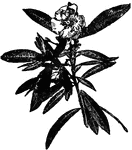
Oleander
"The Oleander is the common and sweet-scented oleander. They have lanceolate coriaceous leaves, with…

Chamaerops Humilis Palm
"Palm is a natural order of endogenous plants, the products of which are of extreme importance and utility…
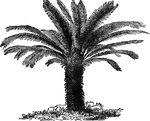
Cycas Revoluta Sago Palm
"Palm is a natural order of endogenous plants, the products of which are of extreme importance and utility…
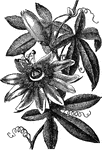
Passion Flower
"Pasiflora is the passion-flower. Generally climbing herbs or shrubs. Fruit succulent, seeds many. Found…
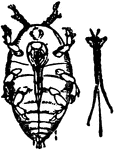
Phylloxera
"Pylloxera is a genus of insects allied to the Aphis and Coccus families. The Phylloxeridæ attach…
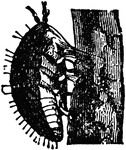
Phylloxera
"Pylloxera is a genus of insects allied to the Aphis and Coccus families. The Phylloxeridæ attach…
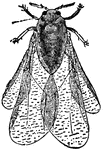
Phylloxera
"Pylloxera is a genus of insects allied to the Aphis and Coccus families. The Phylloxeridæ attach…
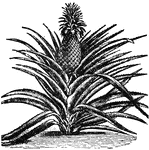
Pineapple
"Pineapple is a plant of the natural order Bromeliacæ. The flowers rise from the center of the…

Quassia
"The Quassia is a tree cultivated in the West Indies and the parts adjacent. It has terminal clusters…
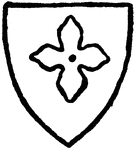
Quatrefoil
"The Quatrefoil is a piercing or panel divided by cusps or foliations into four leaves, or more correctly…
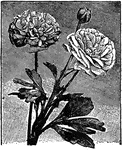
Ranunculus
"Ranunculus, buttercup, crowfoot; the typical genus of the order Ranunculaceæ. Known species about…
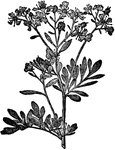
Rue
"The common rue is a half-shrubby plant, two or three feet high, of a fetid odor and an acrid taste.…

Sand Lizard
"The Sand Lizard is a common European lizard, about seven inches long, of which the tail is four. Usual…

Giant Sloth
"Sloth is the popular name for any individual of the Edentate group Tardigrada, from their slow and…
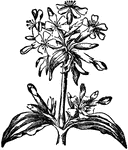
Soapwort
"Soapwort (Saponaria), a genus of plants of the natural order Caryophyllaceæ; so called because…

Corona
"A crown, that is, a circular ornament of metal, leaves, or flowers, worn by the ancients round the…

Corona
"A crown, that is, a circular ornament of metal, leaves, or flowers, worn by the ancients round the…
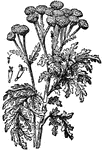
Tansy
"Tansy is a genus of Compositæ, numbering about 50 species of strong-scented herbs, often shrubby…
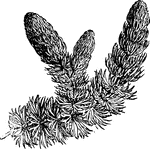
Hornwort
It is a slender aquatic herb, with whorled, finely dissected rigid leaves, and small solotary monoecious…
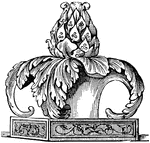
Thyrsus
"Thyrsus, a pole carried by Bacchus, and by Satyrs, Maenades, and others who engaged in Bacchic festivities…

Head of a thyrsus
"Shows the head of a thyrsus composed of the leaves and berries of the ivy, and surrounded by acanthus…

Low Parry
"Carry the point of the bayonet down until it is at the height of the knee, moving the point of the…

Low Parry
"These parries are rarely used, as an attack below the waist leaves the head and body exposed." —…
Abatis
"Abatis consisting of trees lying parallel to each other with the branches pointing in the general direction…
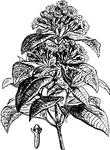
Clove Tree
An evergreen tree 15 to 30 feet high with large elliptic smooth leaves. Its flower buds are commonly…
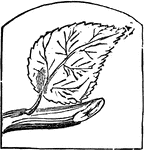
Leaf
One of the three principal parts or organs of vegetation, generally flattened in shape, and greenish…

Bean Plant in Jar
"The bean with its roots in unboiled water will grow for a considerable time, as long as the mineral…
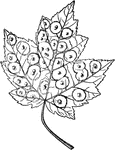
Maple spot gall
"The maple spot gall, so common on the leaves of the red maple, is made by the fungus-gnat of the order…
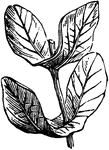
Connate Leaves
A leaf in which the lower lobes are uniteed, either above the stem is sessile or above the petiole if…

Hand with Proof-plane
"A proof-plane may be made by cementing a bronze cent or a disk of gilt paper to a thin insulating handle,…

Plant with Roots Pruned
"This pruning or shortening of the roots causes the production of a new set of fibres from the severed…

Lettuce
An annual plant cultivated in gardens, and which serves as a salad. There are many species, most of…
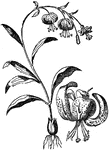
Tiger Lily
An ornamental plant of the genius lilium, characterized by an erect stem from a scaly bulb, numerous…

Lily of the Valley
A genus of plants of the family liliaceae, native to the bushy places of America and Eurasia. It has…

Magnolia
A genus of ornamental shrubs and trees, native to North America, China, India, Japan, and other portions…

Millet
A grass extensively cultivated in some sections of the United States for forage. There are numerous…

Myrtle
A genus of plants native to western Asia, but now naturalized quite extensively in Europe and other…

Nasturtium
A genus of aquatic herbs of the mustard famil, known generally as the water-cresses. The leaves in most…
Herati Design
Also known as the fish, twin fish and Feraghan designs. Better known as the Herati. It originated in…

Herati Design
Also known as the fish, twin fish and Feraghan designs. Better known as the Herati. It originated in…

Herati Design
Also known as the fish, twin fish and Feraghan designs. Better known as the Herati. It originated in…

Herati Design
Also known as the fish, twin fish and Feraghan designs. Better known as the Herati. It originated in…

Herati Design
Also known as the fish, twin fish and Feraghan designs. Better known as the Herati. It originated in…



